Nola has contributed to furnishing Hamntorget - a new social meeting place along Årstaviken promenade in Södermalm, Stockholm.
Nola's classic bench for Kungsträdgården back in production
2020–04–29
2020–04–29
When Kungsträdgården was redesigned before Stockholm became the European Capital of Culture in 1998, the architectonic portrayal ended up with the architect Aleksander Wolodarski. In a unique collaboration between Nola, Wolodarski and the former city gardener Carl-Fredrik Wachtmeister, a new park bench for Kungsträdgården was developed, based on an older model in cast iron and painted pine. This park bench is currently in production again.
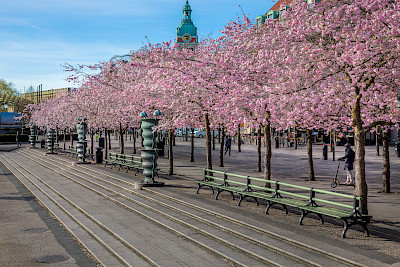
Nolas backed benches for Kungsträdgården in Stockholm. Photo by Jann Lipka.
The redevelopment of Kungsträdgården
Kungsträdgården was redesigned for the first time in the 1950s, but it was not until 1998 that the place took on its present form. Ahead of the new redevelopment that coincided with Stockholm's designation as Capital of Culture, the City of Stockholm announced a competition, which was won by architect Aleksander Wolodarski in collaboration with Anna-Paula Andersson. This became the starting point for a collaboration between Nola, Wolodarski and the gardener Carl-Fredrik Wachtmeister.
Kungsträdgården had previously had a distinct Baroque feel that was lost during the redevelopment in 1953. The new design that was now developed by Wolodarski and Wachtmeister resumed the style idéal, which is reflected on several levels: Through the tiered seating where people could sit in divided rooms, and in the formally pompous gables in cast iron for the new long benches. In connection with the renovation, rose-flowering cherry trees were also planted, which in combination with the characteristic urns by the sculptor Sivert Lindblom, distinguish the place. Twenty-two years later, the location is still a much appreciated and central meeting place in Stockholm.
"The benches in Kungsträdgården have, over the years, coped with the times and the critical eye," says Agneta Stake, owner of Nola, who participated actively in the project when it began. She continues, "It shows how important it is to have thoughtful urban planning in harmony with its surroundings, where furniture in the public environment should last for a long time due to materials and design of high quality. Quite simply, a holistic approach," concludes Agneta Stake.
The backed bench Kungsträdgården
Nola's park benches for Kungsträdgården were adaptations of an older model from the 19th century, upon which Wolodarski/Wachtmeister's designs were based. The replica was transformed into long benches, where a new vintage was produced from the old form. Nola designed and had the models for the benches cast and produced. The original colour was initially a warm shade of grey, which blended into the surroundings. This was recently repainted in a lighter green hue.
Throughout the years, the park benches have served as an obvious place for Stockholmers and visitors to the city to sit back and enjoy what is today this lovely oasis right in the centre of Kungsträdgården. Nola is starting up production of the bench once again, based on the model from 1998 and its older model. Painted Swedish pine is being added to the cast iron ends. In the near future, the backed bench, which is to be called Kungsträdgården, will be part of Nola's standard range.
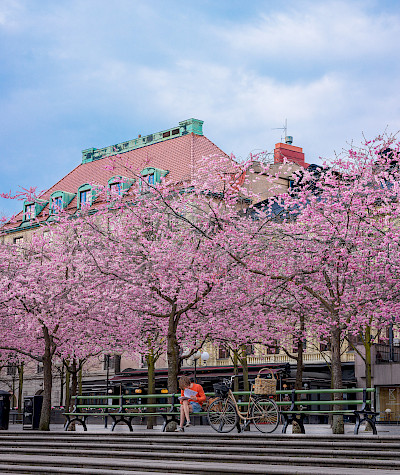
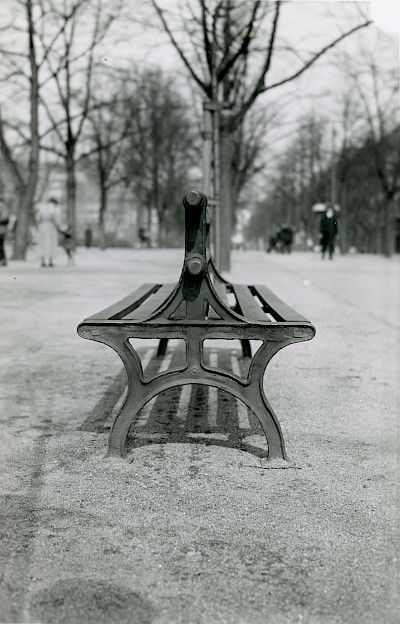
Double backed bench, 19th century. Stock Photography: The street office. 1920-1992. Traffic office archive. Stockholm city.
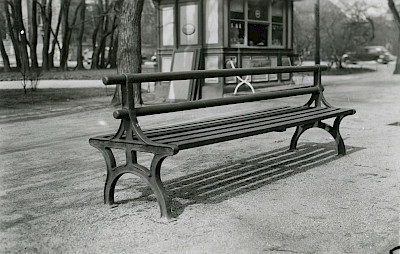
Double backed bench, 19th century. Stock Photography: The street office. 1920-1992. Traffic office archive. Stockholm city.
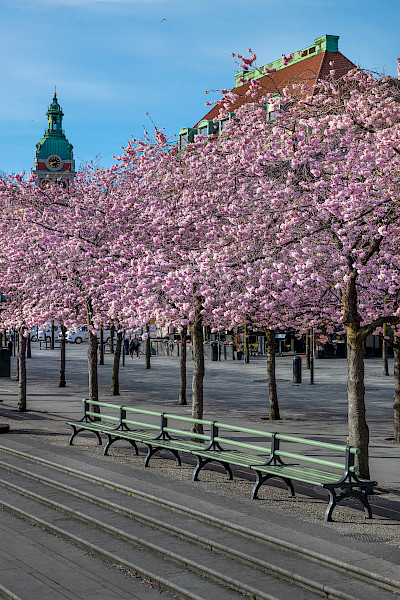
Photo by Jann Lipka.
Nola has contributed to furnishing Hamntorget - a new social meeting place along Årstaviken promenade in Södermalm, Stockholm.
Architects Liljewall installed Nola’s Blenda bike stands in the concourse outside Stockholm's iconic Tomteboda building, an architectural landmark. As Blenda’s integrated LED lighting units show cyclists where to insert locks, they light up the surroundings for pedestrians too.
A former car park has been refurbished and transformed into a social and safe meeting place for residents in Fittja.
The Sigill park bench is designed to withstand the harsh Nordic climate and satisfy the demands for sustainable production and materials.
The Gällivarebänk is designed as a flexible modular system that can be easily varied and adapted to different needs.
Nola is launching a brand new digital planning tool for the Korg furniture system. The tool makes it possible to spatially create and test ideas and solutions according to your specific requirements.
A green restart of the economy requires new solutions in bicycle infrastructure, for healthier cities and a more sustainable society.
Nola strikes a blow for healthy urban environments. Outdoor training at attractive outdoor gyms should be a natural feature of the cityscape and should be included right from the planning stage of urban development.
Designed by Malmström Edström and 02 Landscape Architects, the Viva urban housing development won the prestigious Kaspar Salin architecture award. Nola’s Hjorthhagen furniture group was chosen for the site’s landscaped gardens and community areas.
Nola will showcase new designs at the 2020 edition of the Stockholm Furniture & Light Fair from 4 - 8 Feb 2020. This year, you’ll find us on stand A11: 19, as well as at a few other Stockholm Design Week events throughout the week.
Nola has long worked towards both social and environmental sustainability and at this year's edition of the Stockholm Furniture & Light Fair, the latest steps in the work towards a better future are being presented.